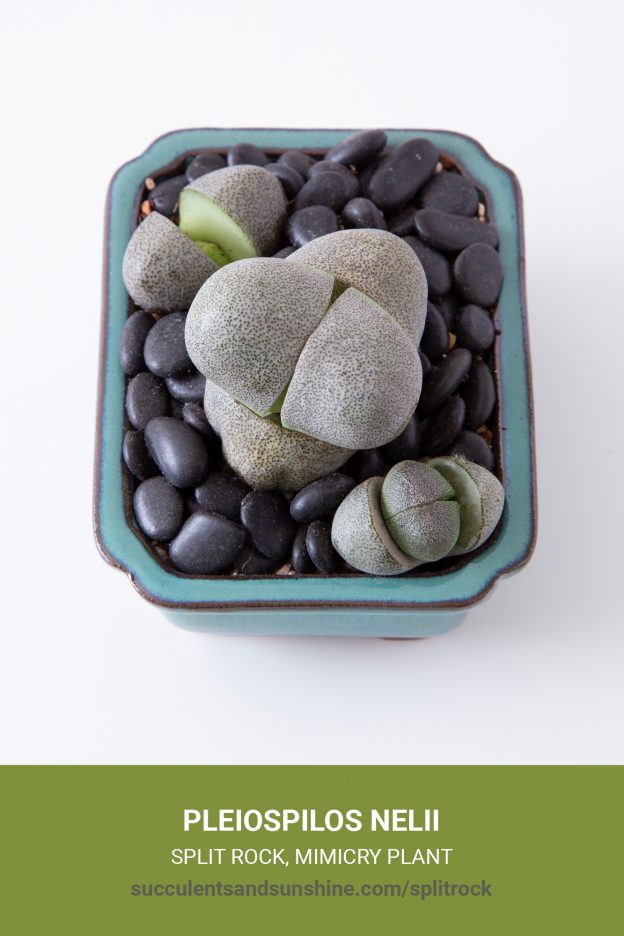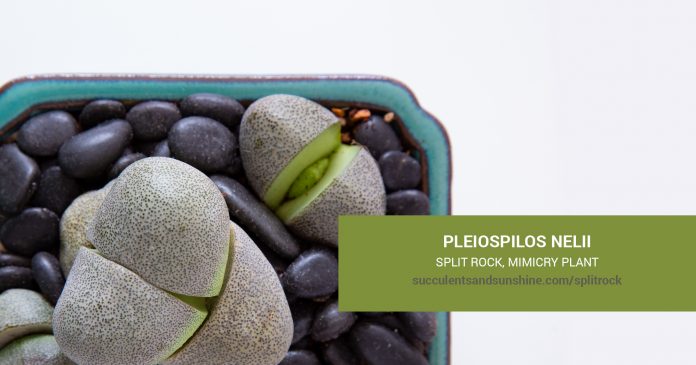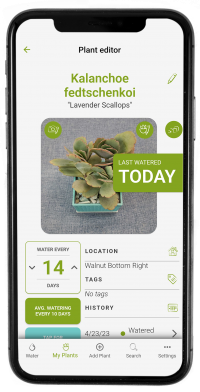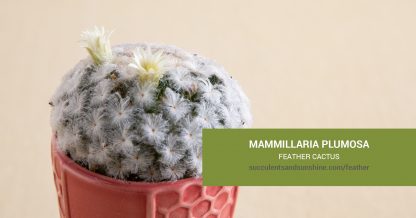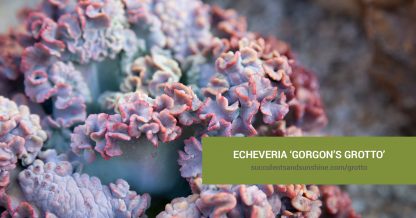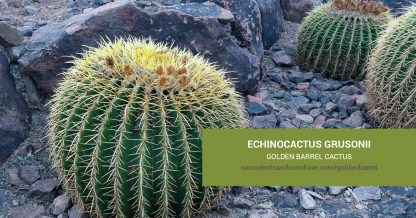Care and Propagation Information
General Care for Pleiospilos nelii “Split Rock”
Pleiospilos nelii “Split Rock”is a perfect example of mimicry in botany. Mimicry occurs when a plant evolves to resemble something around it. In the case of “Split Rock,” Pleiospilos nelii mimics stones, creating camouflage to blend in.
“Split Rock” also has small specks on its leaves. These are “windows” which allows sunlight to penetrate into the body of the plant, so it is able to photosynthesize.
Watering
“Split Rock” tends to need a bit less water than other succulents. It's best to use the “soak and dry” method, and allow the soil to dry out completely between waterings. Water sparingly during the winter. Over-watering can cause your “Split Rock” to burst or rot.
Where to Plant
Pleiospilos nelii “Split Rock” is not cold hardy, so if you live in a zone that gets colder than 30° F (-1.1° C), it's best to plant this succulent in a container that can be brought indoors. It does well in full to partial sun.
Plant in sandy, well-draining soil. “Split Rock” does well indoors on windowsills.
How to Propagate Pleiospilos nelii “Split Rock”
“Split Rock” can be propagated by division or by seeds. If you are new to growing from seed, be aware that, like any succulent seed, it can take quite some time to grow a full-sized plant.
Division
Pleiospilos nelii “Split Rock” can be propagated by dividing the leaves. Clumps should be removed in the spring before it begins to grow new leaves.
Using a sharp, sterile knife, remove a leaf from the main plant. Allow it to callous over for a day or two, and then place in well-draining sandy soil.
Seeds
“Split Rock” can be easily grown from seeds harvested from the flower pod or purchased online. Begin to sow your seeds in the summer, in a warm place.
For best results, soak your Pleiospilos nelii seeds in water for 24 hours before planting in a small layer of sandy soil. Keep soil damp, but not too wet, until seeds germinate.
Soil
Pleiospilos nelii likes soil without much organic material. Use a well-draining soil (preferably sandy) and do not fertilize unless it is during its growing time.
Often Confused With
Pleiospilos nelii “Split Rock” is often confused with Lithops.
